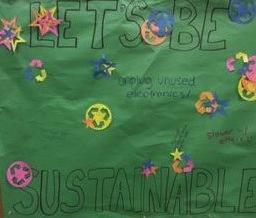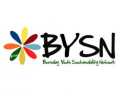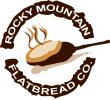Blog Post: The Urban Green Tourist - My photoblog on the little green things in life

I learn when I don't think about learning. I am not the person to be confined in within a box. It's better if it is a library of knowledge that I have. But it is best if I immerse myself in the experience of learning.
But how am I going to be in the process of achieving that goal?
I am not satisfied with the finiteness of the word "achieved". I am more intent on considering goals in the syntax of the infinite. That is, I am always in the process of achieving. Bruce Lee once said "There is no such thing as maturity. There is instead an ever-evolving process of maturing. Because when there is a maturity, there is a conclusion and a cessation. That's the end." I don't just say that there are avenues of opportunity ahead of me, I let myself be immersed in the avenues of opportunities. Because then, I can think less about the avenue of opportunity than where it will guide me like a river.
I came up with the idea of a Green Photoblog while eating at a small bistro along W Broadway one evening. Sustainability was definitely something that was on my mind back then, from the Environmental Club that I attended in high school, to the classes focusing on Geography, the internships, the countless treks into the Pacific Spirit Park, the mix-and-mingles with the folks at a Green Drinks discussion session, you name it. I saw a tissue dispenser with its description stating that the tissue paper within is made of mostly recyclable material. I let my instinct to archive and learn take control of my mind as I reached for my camera to snap a picture of it.
A solar powered electric trash can. Snap. Archive.
An upcoming Sustainability Fair at UBC. Snap. Archive.
A UV-treated water dispenser, with a numeric counter that states how many plastic water bottles one would save if they utilize this machine.
Snap.
Archive.
My photoblog in my Dropbox is modest at best, but it is definitely growing. I encourage environmental thinkers from all walks of life to build upon this project, and be your own "green tourist" wherever you are.
https://www.dropbox.com/sc/cr9l3j4sk7osetl/tb_EvzmzIz?n=8965584
Category:



































Comments
There are many things to do in Yunnan - a landlocked province in the southwest of the People's Republic of China. The province spans approximately 394,000 km2 (152,000 sq mi) and has a population of 48.3 million (as of 2018). The capital of the province is Kunming. The province borders the Chinese provinces of Guizhou, Sichuan, autonomous regions of Guangxi, and Tibet as well as Southeast Asian countries: Vietnam, Laos, and Myanmar. Yunnan is China's fourth least developed province based on disposable income per capita in 2014.
Yunnan is situated in a mountainous area, with high elevations in the northwest and low elevations in the southeast. Most of the population lives in the eastern part of the province. In the west, the altitude can vary from the mountain peaks to river valleys by as much as 3,000 m (9,800 ft). Yunnan is rich in natural resources and has the largest diversity of plant life in China. Of the approximately 30,000 species of higher plants in China, Yunnan has perhaps 17,000 or more. Yunnan's reserves of aluminium, lead, zinc and tin are the largest in China, and there are also major reserves of copper and nickel. Historically, the southwestern Silk Road to Bhitargarh in Bangladesh passed through modern Yunnan.
Parts of Yunnan formed the Dian Kingdom during the 3rd and 2nd centuries BC. The Han dynasty conquered the Dian Kingdom in the late 2nd century BC, establishing the Yizhou Commandery in its place. During the chaos of the Three Kingdoms period, imperial Chinese authority in Yunnan weakened, and much of the region came under the control of the Cuanman. The area was later ruled by the Sino-Tibetan-speaking kingdom of Nanzhao (738–937), followed by the Bai-ruled Dali Kingdom (937–1253). After the Mongol conquest of the region in the 13th century, Yunnan was conquered and ruled by the Ming dynasty.
From the Yuan dynasty onward, the area was part of a central-government sponsored population movement towards the southwestern frontier, with two major waves of migrants arriving from Han-majority areas in northern and southeast China. As with other parts of China's southwest, Japanese occupation in the north during World War II forced another migration of Han people into the region. These two waves of migration contributed to Yunnan being one of the most ethnically diverse provinces of China, with ethnic minorities accounting for about 34 percent of its total population. Major ethnic groups include Yi, Bai, Hani, Zhuang, Dai, and Miao. Yunnan has also been identified as "the birthplace of tea ... the first area where humans figured out that eating tea leaves or brewing a cup could be pleasant", and as the region of origin of the genus Cannabis plant.